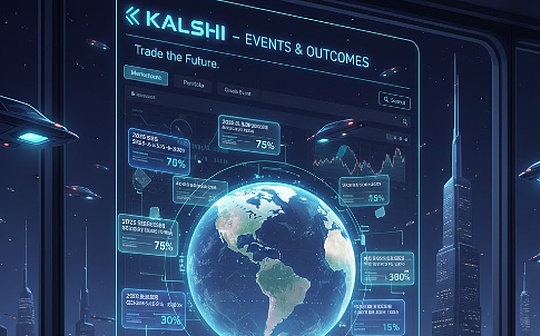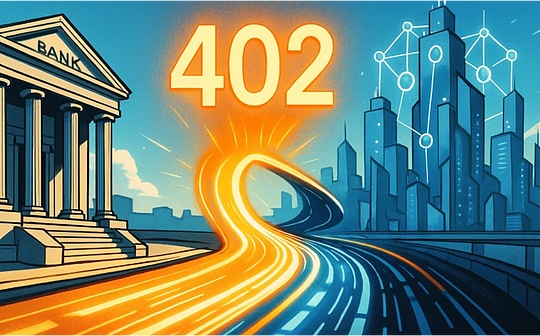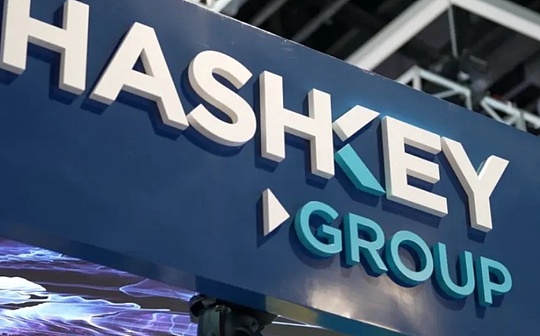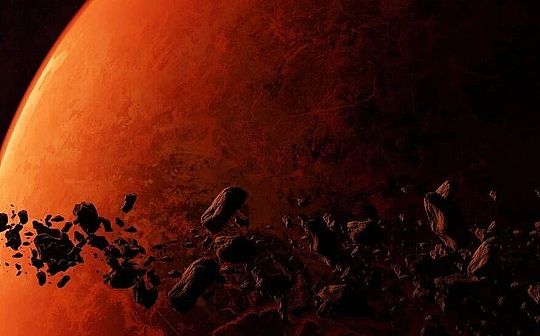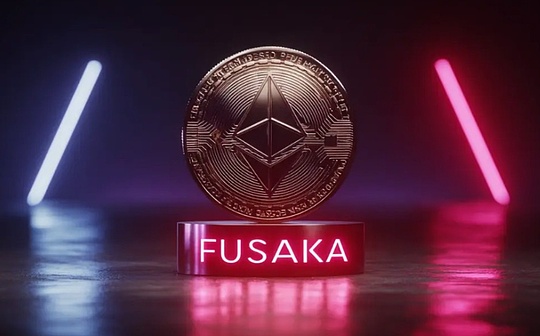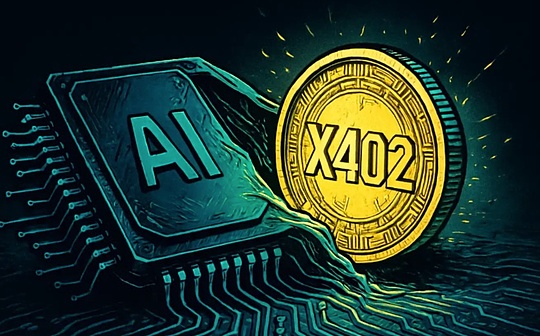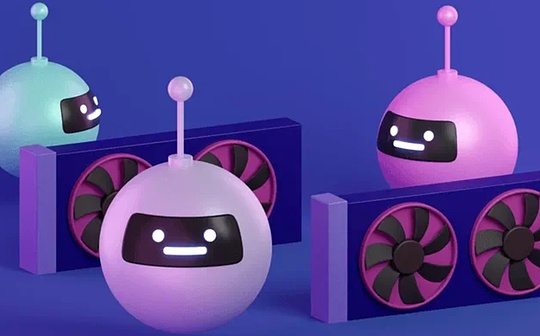
Author: Zeke, YBB Capital Source: Medium Translation: Shan Oba, Bit Chain Vision
summary
-
The ZK associate processor can be regarded as a chain computing plug -in under the chain derivative of the modular concept. Similar to the GPU in the traditional computer, the graphic computing task is uninstalled from the CPU to handle specific calculation tasks.
-
They can be used to process complex calculations and large amounts of data, reduce GAS costs and expand smart contract functions.
-
Unlike Rollups, the ZK collaborator is free of state and can be used across the chain, which is suitable for complex computing scenarios.
-
The development of ZK associate processors is challenging, high performance costs, and lack of standardization.The cost of hardware is also quite high.Although compared with a year ago, the field has matured a lot, it is still in the early stage.
-
As the era of modularization enters the fractal expansion, the blockchain is facing problems such as liquidity shortage, user dispersion, lack of innovation and cross -chain interoperability, and forms a paradox with vertical expansion L1 chains.The ZK associate processor may provide a method to overcome these challenges, support existing and emerging applications, and bring new narratives to the blockchain field.
1. Another branch of modular infrastructure: ZK collaborative processor
1.1 Overview of ZK Synthetic Processor
The zero -knowledge association processor can be understood as a chain computing plug -in under the chain derived from the modular concept. Similar to the GPU in the traditional computer, the GPU is uninstalled from the CPU, and it processs a specific computing task.Under this design framework, the tasks that the public chain is not good at, such as “heavy data” and “complex computing logic”, can be handed over to the zero -knowledge association processor to calculate.Knowledge proof to ensure its correctness, and ultimately achieve the complicated chain of complex tasks.
At present, popular applications such as AI, SocialFi, DEX, Gamefi have urgent demand for high performance and cost control.In traditional solutions, these “heavy applications” with high performance requirements often choose the application model of asset chain+under the chain, or design a separate application chain.However, both methods have inherent problems: the former has “black boxes”, and the latter is facing problems such as high development costs, leaving the original chain ecology, and fragmentation of liquidity.In addition, the main chain virtual machine has also caused great restrictions on the development and operation of such applications (such as lack of application layer standards, complex development languages, etc.).
The ZK collaborator is to solve these problems.For more specific examples, we can imagine the blockchain as a terminal (such as mobile phones or computers) that cannot connect to the network. In this scenario, we can run relatively simple applications on the chain, such as Uniswap or otherDefi application.However, when more complicated applications appear, such as running applications similar to ChatGPT, the performance and storage of the public chain will not be enough, resulting in the GAS explosion.In the web2 scene, when we run the CHATGPT, our ordinary terminal itself cannot handle the GPT-4O large language model. We need to connect to the Openai server to turnover the problem. After the server calculates and infer the result, we directly get the answer.The ZK associate processor is like the remote server of the blockchain. Different collaborators projects have subtle design differences according to the type of project type, but the underlying logic is roughly the same -the linked calculation + zk certificate or storage certificate is verified.
Taking RISE ZERO’s Bonsai deployment as an example, this architecture is very intuitive.This project seamlessly integrates to Rise Zero’s own ZKVM. Developers can use Bonsai as a collaborator with only two simple steps:
-
Write a ZKVM application to process the application logic.
-
Write a solidity contract, asking Bonsai to run your ZKVM application and process the results.
1.2 The difference between Rollups
From the above definition, Rollups and ZK Coprocessors have a high degree of logic and targets, but RollUps is more like a multi -core extension of the main chain. The specific differences between the two are as follows:
1. Main purpose:
-
ROLLUPS: Enhance the throughput of the blockchain trading and reduce the transaction cost.
-
ZK associate processor: extend the computing power of smart contracts to process more complex logic and larger data.
2. Working principle:
-
Rollups: Summary trading on the summary chain, and submit it to the main chain with the fraud certificate or ZK certificate.
-
ZK collaborator: similar to ZK Rollups, but designed for different application scenarios.ZK Rollups is not suitable for collaborative processor tasks due to chain -specific constraints and rules.
3. Status management:
-
Rollups: Maintain its state and synchronize with the main chain regularly.
-
ZK collaborator: No state, each calculation is no state.
4. Application scenario:
-
Rollups: The main service end users, suitable for high -frequency transactions.
-
ZK associate processor: It mainly serves enterprises and is suitable for scenarios that require complex calculations, such as high -level financial models, big data analysis, etc.
5. The relationship with the main chain:
-
Rollups: Expansion of the main chain, usually focused on specific blockchain networks.
-
ZK associate processor: It can serve multiple blockchain, not limited to specific main chains, or can also serve ROLLUPS.
Therefore, the two are not mutually rejection but complement each other. Even if Rollup exists in the form of application chain, ZK Coprocessors can still provide services.
1.3 Use case
Theoretically, the application scope of the ZK associate processor is very wide, covering projects in various fields of blockchain.The ZK associate processor enables DAPPS to have the function of closer to centralized web2 applications.Here are some examples of examples collected from online sources:
Data -driven DApp development:
The ZK associate processor enables developers to create data -driven DAPP. These DAPP uses complete chain historical data for complex calculations without additional trust assumptions.This has opened up unprecedented possibilities for DAPP development, such as:
-
Advanced data analysis: similar to the data analysis function on the chain of Dune Analytics.
-
Complex business logic: Realize complex algorithms and business logic in traditional centralized applications.
-
Cross -chain application: Build cross -chain DAPPS based on multi -chain data.
DEX’s VIP trader program:
A typical application scenario is to implement a transaction -based discount plan in DEX, that is, the “VIP trader loyalty plan”.Such plans are common in CEX, but rare in DEX.
With the help of ZK collaborators, DEX can:
-
Track the historical transaction volume of users.
-
Calculate the user’s VIP level.
-
Adjust the transaction fee based on VIP level dynamic.This function can help DEX increase the user reservation rate, increase liquidity and eventually increase income.
Data enhancement of smart contracts:
The ZK associate processor can be used as a powerful middleware to provide data capture, computing and verification services for smart contracts, thereby reducing costs and improving efficiency.This enables smart contracts to:
-
Visit and process a lot of historical data.
-
Implement complex chain calculation.
-
Realize more advanced business logic.
Cross -chain bridge technology:
Some cross -chain bridge technologies based on ZK, such as Herodod, Lagram, etc., can also be regarded as the application of ZK collaborators. These technologies mainly focus on data extraction and verification, which provides cross -chain communication with available communication.Data foundation of the letter.
1.4 ZK collaborative processor is not perfect
Although there are so many advantages of the ZK collaborative processor, the current stage is not perfect, and there are still some problems. I summarized the following points:
-
Development: The concept of ZK is more difficult to master for many developers. Development requires relevant cryptography knowledge, and is proficient in specific development languages and tools.
-
High hardware cost: The ZK hardware used under the chain must be borne by the project party. The price of ZK hardware is expensive and the evolution speed is fast. It may be eliminated at any time. Whether it can form a commercial closed loop is a problem worth thinking about.
-
Crowded areas: Technically, there will be no major differences in implementation. The final result may be similar to the current layer2 pattern. Some of the outstanding projects stand out, and the remaining projects are basically ignored.
-
ZK circuit: Calculate under the chain in the ZK associate processor needs to convert the traditional computer program to the ZK circuit.Writing a custom circuit for each application is very troublesome, and the use of ZKVM in the virtual machine will generate a large amount of calculation overhead due to different calculation models.
-
Model conversion: GIZA converts the commonly used onnx format AI model into a format that can run in the zero -knowledge proof system.This allows developers to train models with familiar tools and then deploy them on the GIZA network.
-
Binding reasoning: When the smart contract requests the AI model reasoning, GIZA will perform actual calculations under the chain.This avoids the high cost of running complex AI models directly on the blockchain.
-
Zero Knowledge Verification: Giza generates zero -knowledge proof for each model reasoning, and the calculation calculation is correct.These proofs are verified on the chain to ensure the correctness of the reasoning results without repeating the entire computing process on the chain.
-
Bonsai: Bonsai is a collaborator component in RISC ZERO, seamlessly integrated into the ZKVM of the RISC-V instruction set architecture.It allows developers to quickly integrate high -performance and zero knowledge to Ethereum, L1 blockchain, COSMOS application chain, L2 Rollup and DAPP within a few days.It provides direct intelligent contract calls, verified chain computing, cross -chain interoperability, and universal ROLLUP functions, while using decentralized first -grade distributed architecture.Combining recursive proof, custom circuit compilers, state continuity and continuous improvement algorithm, it allows anyone to generate high -performance zero -knowledge proof for various applications.
-
ZKVM: ZKVM is a validable computer, which is similar to the real embedded RISC-V microphone.Based on the RISC-V instruction set architecture, it allows developers to write programs that can generate zero-knowledge certification with advanced programming languages such as RUST, C ++, Solidity, Go.It supports more than 70% of the popular RUST package, seamlessly integrates general computing with zero -knowledge proof, and can generate efficient zero -knowledge proof for the calculation of any complexity, while maintaining the privacy of the computing process and verifiable results.ZKVM uses zero-knowledge technology such as Stark and Snark to achieve efficient proof-generating and verification through components such as the Recursion Prover, Stark-TO-SNARK Prover, and supporting the execution and verification of the chain.
-
ZKFABRIC: ZKFabric is a relay component of the Brevis architecture. The main task is to collect and synchronize the block header information from all connected blockchain, and then generate consensus proof of the block header collected through the ZK light client circuit.
-
ZKQUERYNET: ZKQUERYNET is an open ZK query engine market that can directly accept data query from smart contracts on the chain, and generate query results and corresponding ZK query proofs through the ZK query engine circuit.These engine range ranges from highly specialized (for example, calculating the trading volume of DEX within a certain period) to highly general data index abstract and advanced query language to meet various application needs.
-
ZKAGGROGATOROLLUP: As the aggregation and storage layer of ZKFABRIC and ZKQueryNet, responsible for verifying the proof of these two components, the storage data that has been proved, and submitted the status of its ZK to all connected blockchains, thereby allowing DAPP to in its chain chainVisit the proven query results directly in the smart contract business logic.
-
ZK Big Data: This is the core product of Lagrange, responsible for processing and verifying cross -chain data and generating related zero -knowledge proof.This component includes a highly parallel ZK associate processor that is used to perform complex chain calculations and generates zero -knowledge proof; a specially designed support unlimited storage slot and direct SQL query can be verified database from smart contracts;The data point of changes is to reduce the dynamic update mechanism of the proof of time; and an integrated function allows developers to use SQL to check historical data directly from smart contracts without writing complex circuits.They together constitute a large -scale blockchain data processing and verification system.
-
Status Committee: This component is a decentralized verification network composed of multiple independent nodes, and each node pledged ETH as a mortgage.These nodes act as the ZK light client to verify that some optimized Rollup are specifically verified.The status committee and Eigenlayer’s AVS integration uses the re -pledge mechanism to enhance security, support unlimited number of participating nodes, and achieve super linear security growth.It also provides a “fast mode” that allows users to perform cross -chain operations without waiting for the challenge window, which greatly improves the user experience.The combination of these two technologies enables Lagrange to efficiently handle large -scale data, perform complex computing, and securely transmit and verify the results between different blockchain to support developing complex cross -chain applications.
II. The key elements adopted large -scale
(This part of the content is very subjective, and only represents the author’s personal point of view.)
This cycle is mainly led by modular infrastructure.If the modularization is the right path, this cycle may be the last step towards large -scale adoption.However, at this stage, we all have a common feeling: why we only see that some old applications have been re -packaged, why there are more chain than applications, and why new token standards like inscriptions are known as this one as this oneThe greatest innovation of the wheel cycle?
The fundamental reason for the lack of fresh narrative is that the current modular infrastructure is not enough to support super applications, especially lack of some prerequisites (cross -chain interoperability, user barriers, etc.), leading to the worst fragmentation in blockchain history.As the core of the modular era, Rollups has indeed accelerated the process, but it has also brought many problems, such as liquidity fragmentation, user dispersion, chain or virtual machines itself.In addition, another “key player” Celestia, another “key player”, created the road that DA may not be on Ethereum, further exacerbating fragmentation.Whether it is ideological driver or DA cost driver, the result is that BTC is forced to become DA, and other public chains are designed to provide more cost -effective DA solutions.The current situation is that each public chain has at least one or even dozens of Layer2 projects.In addition, all infrastructure and ecological projects have deeply learned the tokens pledge strategy created by Blur, asking users to pledge token in the project.This model benefits giant whales from three aspects (interest, ETH or BTC appreciation, free tokens), and further compressing the liquidity on the chain.
In the past bull market, funds will only flow among a dozen public chains, and even focus on Ethereum.Now, funds are scattered on hundreds of public chains, and thousands of similar projects have been bet, resulting in a reduction in the chain activities.Even Ethereum lacks chain activities.Therefore, Oriental players perform PVP in the BTC ecosystem, and Western players are necessary to perform PVP in Solana.
Therefore, my current focus is how to promote the aggregation liquidity of all chains and support the emergence of new gameplay and super applications.In the field of cross -chain interoperability, traditional leading projects have always performed poorly and are still similar to traditional cross -chain bridges.The new interoperability solutions we have discussed in previous reports mainly aims to aggregate multiple chains into one chain.Examples include Agglayer, Superchain, Elastic Chain, Jam, etc., which will not be introduced one by one.All in all, cross -chain aggregation is a necessary obstacle to modular infrastructure, but it takes a long time to overcome.
The ZK associate processor is the key part of the current stage.They can strengthen Layer2 and add Layer1.Is there a way to temporarily overcome cross -chain and dilemma, let us realize some applications of the current era on some widely liquidity Layer1 or Layer2?After all, blockchain applications lack fresh narrative.In addition, a variety of gaming methods, GAS control, large -scale application, cross -chain capabilities, and reducing user obstacles can be achieved more ideal than dependencies through integrated collaborator solutions.
3. Project Overview
The ZK Coprocessor field has risen around 2023, and it is relatively mature at this stage.According to the classification of MESSARI, this field currently covers three major vertical areas (universal computing, interoperability and cross -chain, AI and machine training), with a total of 18 projects.Most of these projects are supported by the head VC.Here we introduce several projects from different vertical fields.
>
3.1 GIZA
>
GIZA is the ZKML (zero -knowledge machine learning) protocol deployed on Starknet, which is officially supported by Starkware.It focuses on enabling AI models to be verified for blockchain smart contracts.Developers can deploy the AI model on the GIZA network, and then provide the correctness of the reasoning of the model reasoning through zero -knowledge certification, and provide the results to smart contracts in a way without trust.This allows developers to build a chain application combined with AI functions, while maintaining the decentralization and verification of the blockchain.
GIZA completes the workflow through the following three steps:
The GIZA method allows the AI model to be a trusted input source for smart contracts without relying on centralized prophecy machine or credible execution environment.This has opened up new possibilities for blockchain applications, such as AI -based asset management, fraud testing and dynamic pricing.It is one of the few projects in the field of Web3 X AI in the field of logical closed -loop and clever use of the AI field processor.
3.2 RISC ZERO
Risc Zero is a leading processor project supported by many top VCs.It focuses on allowing any calculations to execute in the blockchain smart contract.Developers can use Rust to write a program and deploy them on the RISC ZERO network.Then, Risc Zero provides the correctness of the verification program through zero -knowledge proof, and provides the result to smart contracts without trust.This allows developers to build complex chain applications while maintaining the decentralization and verification of the blockchain.
We briefly mentioned the deployment and workflow.Here, we introduced two key components in detail:
RISC ZERO has integrated with multiple ETH Layer2 solutions and demonstrated various cases of Bonsai.An interesting example is Bonsai Pay.This demonstration uses Risc Zero’s ZKVM and Bonsai proof services, allowing users to use their Google account to send or extract ETH and tokens on Ethereum.It shows how Risc Zero seamlessly integrates the application on the chain with the main identity providers such as OAUTH2.0 (standard providers such as Google), thereby providing a use case to reduce Web3 user obstacles through traditional web2 applications.Other examples include DAO -based applications.
3.3 = nil;
= Nil; is an investment project supported by well -known institutions such as Mina, Polychain, Starkware, Blockchain Capital.It is worth noting that ZK technology pioneers such as MINA and Starkware are also among supporters, indicating that the project is highly technically recognized.= Nil; It is also mentioned in our report “Computing Power Market”, which mainly focuses on Proof Market (decentralized proof of generating market).In addition, = nil; there is another sub -product called Zkllvm.
ZKllvm is developed by = nil; Foundation is an innovative circuit compiler. It can automatically convert the application code written by mainstream programming languages such as C ++ and Rust automatically.Specific language (DSL) in the field of knowledge.This greatly simplifies the development process, reduces the entry threshold, and improves performance by avoiding ZKVM.It supports hardware to accelerate to speed up the proof of generating generation, so that it is suitable for various ZK application scenarios, such as ROLLUPS, cross -chain bridge, prophecy machine, machine learning and game.It is closely integrated with = nil; Foundation’s Proof Market, which provides developers with end -to -end support from circuit creation to proof.
3.4 Brevis
>
Brevis is a sub -item of Celer Network. It is a blockchain smart zero knowledge (ZK) collaborator, which enables DAPP to access, calculate and use any data of crossing multiple blockchains in a way that is completely without trust.Like other collaborators, Brevis has extensive use cases, such as data -driven DEFI, ZKBRIDGES, user acquisition, ZKDID and social account abstraction.
>
Brevis architecture consists of three main parts:
Through this modular architecture, Brevis can provide all supported public chain smart contracts with no trust, efficient and flexible access methods.UNI’s V4 version also adopts this solution, and integrates it with HOOKS (a system that is used to integrate various user -defined logic) to facilitate reading historical blockchain data, reduce GAS costs, while ensuring decentralizationEssenceThis is an example of a ZK associate processor to promote DEX.
3.5 Lagrange
Lagrange is an aggressive zero -knowledge certification association processor protocol led by 1KX and Founders Fund. It is mainly aimed at providing applications that need to be complicated by large -scale data computing without trust.Unlike traditional node bridges, Lagrange’s cross -chain interoperability is mainly realized through its innovative zero -knowledge proof of big data and national committee mechanism.
Lagrange has integrated with EigenLayer, Mantle, Base, Frax, Polymer, Layerzero, Omni, Altlayer and other integrated, and will become the first ZK AVS to the Ethereum ecosystem.


